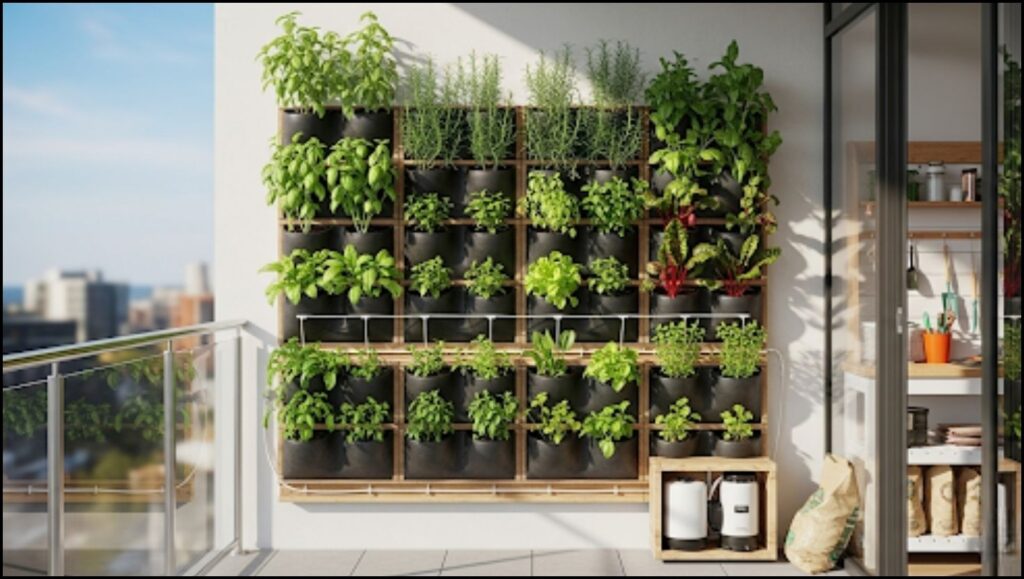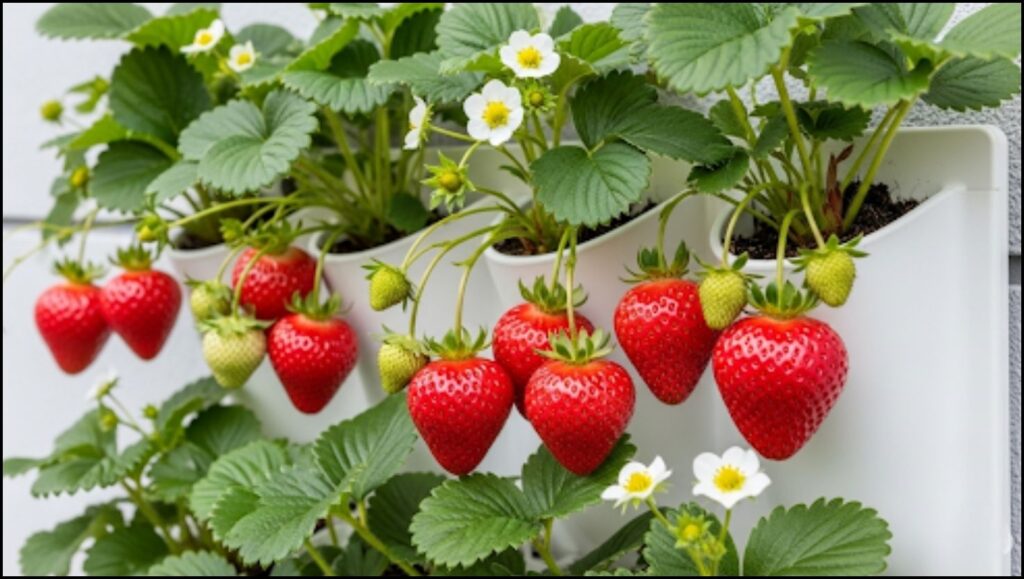
As urban populations swell and private outdoor space becomes a premium, a growing number of people are turning to an innovative solution to cultivate plants: vertical gardening. This method, which involves growing plants on a vertically suspended panel or wall-mounted structure, offers a practical way to bring fresh produce and greenery into even the smallest apartments. This guide explains how to build a vertical garden, drawing on advice from horticultural experts to ensure a successful and sustainable project.
Key Steps to a Thriving Vertical Garden
| Key Stage | Core Consideration | Expert Advice (Source) |
| Location | Sunlight Exposure | Most edibles require at least six hours of direct sunlight. South or west-facing walls are ideal outdoors. Indoors, supplement with grow lights. (University of Maryland Extension) |
| Structure | DIY vs. Kit | Pre-made kits offer convenience and proven design. DIY vertical garden projects using pallets or containers can be more cost-effective but require careful construction. |
| Plants | Suitability | Choose plants with shallow root systems and a compact growth habit, such as lettuce, herbs, strawberries, and marigolds. (PennState Extension) |
| Irrigation | Water Management | Vertical gardens dry out quickly. A built-in drip irrigation system is most efficient, but consistent hand-watering is a viable alternative. |
The Rise of Vertical Gardens in Urban Living
The trend towards vertical gardening is driven by more than just aesthetics. It represents a significant shift in urban farming, empowering residents to reclaim control over a portion of their food source. For many, it’s a direct response to limited horizontal space in cities, transforming barren walls and balconies into productive micro-farms.
“A vertical garden is a highly efficient use of space, but it’s also a powerful connection to nature,” said Dr. Eleanor Vance, a specialist in urban horticulture at the Center for Sustainable Living. “The psychological benefits of tending to plants and harvesting your own food, even on a small scale, are well-documented. It reduces stress and fosters a greater appreciation for where our food comes from.”
Beyond personal wellness, these structures can contribute to a healthier urban environment. Plants can help insulate buildings, reduce ambient noise, and improve localized air quality by filtering pollutants, according to a report from the U.S. Environmental Protection Agency (EPA).

A Practical Guide on How to Build a Vertical Garden
Building a successful vertical garden involves careful planning and execution. The process can be broken down into four key stages, from choosing a location to selecting the right plants.
Step 1: Choosing the Right Location
The single most important factor for a productive garden is light. Most vegetables and herbs require a minimum of six hours of direct sunlight per day.
- Outdoor: An unobstructed wall or fence facing south or west is typically the best choice in the Northern Hemisphere. Ensure the structure you plan to attach the garden to can support the weight of the soil, water, and plants.
- Indoor: A sunny window may suffice for some low-light herbs, but for most plants, supplemental lighting is necessary. Full-spectrum LED grow lights are an energy-efficient option for indoor gardening, allowing you to place your garden anywhere.
Step 2: Selecting a Vertical Garden System
Vertical garden structures range from simple do-it-yourself projects to sophisticated, commercially available kits.
- DIY Vertical Garden: Popular homemade options include using repurposed wooden pallets, attaching rain gutters to a wall, or creating pocket planters from heavy-duty landscape fabric. These methods are often budget-friendly but require more labor and basic carpentry skills. It is crucial to ensure any materials used, especially pallets, are heat-treated (marked “HT”) and not chemically treated (marked “MB”).
- Pre-Made Kits: Modular kits with interlocking pots, wall-mounted panels, or freestanding towers are widely available from garden supply stores. While more expensive, they are designed for this purpose, often including integrated irrigation systems and ensuring proper drainage.
Step 3: Assembling Your Garden and Preparing the Soil
Once you have your system, fill it with a suitable growing medium.
“Do not use standard garden soil, which is too heavy and compacts easily in containers,” advises the University of California Agriculture and Natural Resources division. “A high-quality, lightweight potting mix designed for containers will provide the right balance of aeration, drainage, and water retention.” Before adding plants, ensure your structure is securely fastened to the wall or stable on the ground. Use a level to ensure it is straight, which will help with even water distribution.
Best Plants and Long-Term Maintenance
Success isn’t just about the build; it’s about what you grow and how you care for it.
Plant Selection for Vertical Growth
The best candidates for vertical gardens are plants that are relatively compact and do not require deep soil. Excellent choices include:
- Herbs: Mint, basil, chives, parsley, oregano, and thyme.
- Leafy Greens: Loose-leaf lettuce, spinach, kale, and arugula.
- Fruits: Strawberries are famously well-suited to vertical systems.
- Edible Flowers: Nasturtiums and marigolds add color and are edible.
Avoid large, heavy plants like standard tomatoes or squash, as their weight can strain the structure and their deep roots require more space than most systems provide.

Watering and Fertilizing
Due to their increased exposure to sun and wind, vertical gardens can dry out much faster than traditional garden beds. Check the soil moisture daily by inserting a finger an inch deep.
“Consistent watering is non-negotiable,” Dr. Vance emphasized. “A drip irrigation system on a timer is the gold standard for convenience and efficiency, delivering water directly to the roots and minimizing waste.” If hand-watering, do so in the morning and apply water directly to the soil until it runs out the bottom drainage holes. Because nutrients leach out with each watering, you will need to fertilize regularly. Use a balanced liquid fertilizer every 2-4 weeks during the growing season, following the product instructions. The movement toward hyper-local food sources and greener living spaces suggests that vertical gardening is more than a passing fad. As technology for indoor gardening and modular systems improves, the ability to build and maintain a garden on any wall may become an increasingly common feature of the urban home.
10 Fast-Growing Succulents That Fill Your Garden in No Time—Experts Approve
